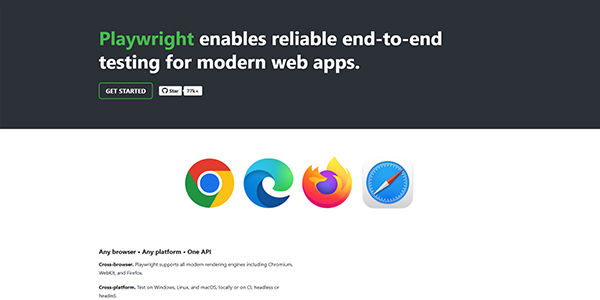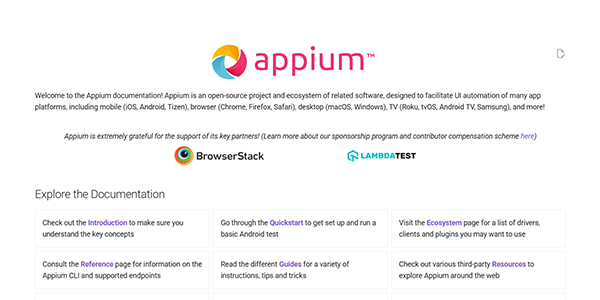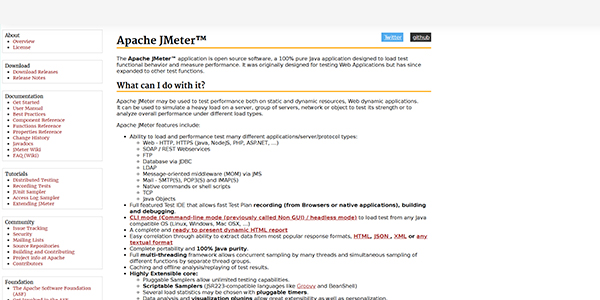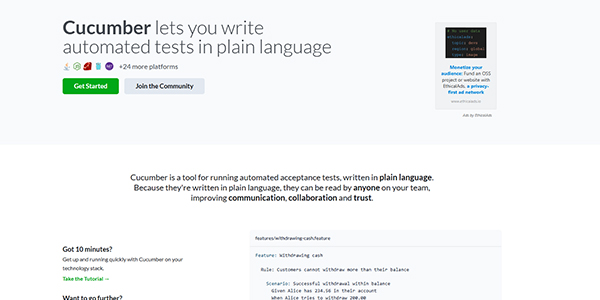Highlights
- Manual testing slows development, while open-source automation tools improve accuracy, speed, and scalability.
- Open source is cost-effective, flexible, community-driven, and integrates well with CI/CD pipelines for modern workflows.
- From Playwright, Cypress, and Selenium to Appium, JMeter, Robot Framework, and Cucumber, each tool has unique strengths; pick based on your project type, team skills, and scalability goals.
Delivering successful apps that meet both user expectations and business goals can be challenging, especially if your testing process depends entirely on manual operations.
A Gartner study reports that the main reason for 60% of IT and software engineering leaders to automate software testing is to improve product quality, while 43% say they experience a higher test accuracy after implementing automation.
These numbers prove how critical automation testing is for your app. If you’re thinking about switching to automation testing but don’t know which tool to use, fret not.
In this blog, we discuss the top seven open-source automation testing tools that you’ll find incredibly helpful and tips to select the one that makes the most sense for you.
Why Use Open Source Automation Tools?
If you’ve ever felt limited by expensive or rigid testing platforms, open-source automation tools can be a game-changer. They are not just a passing trend; they offer real, practical advantages that make testing faster, more affordable, and easier to manage. Here’s why many teams are making the switch:
Also Read: Difference Between a Website and a Web Application
➢ Cost-effectiveness
Most proprietary automation tools come with high licensing costs, especially if you need multiple seats or enterprise-level access. With open source, you get the same level of functionality without those fees. This means your budget can be directed toward what really matters—growing your team, upgrading infrastructure, or speeding up delivery cycles.
➢ Flexibility
Every project has unique testing needs, and open-source tools give you the power to meet them. You can customize settings, add plugins, or even modify the source code itself. If your team wants a specific feature, you’re not waiting for a vendor roadmap—you can build it or leverage community contributions.
➢ Community Support
One of the biggest advantages of open source is the community behind it. Developers and testers around the world continuously improve these tools, share fixes, and post solutions online. Instead of waiting days for vendor support, you can often find answers in minutes through GitHub issues, forums, or Q&A platforms.
➢ Integration Power
Modern software development relies on a connected ecosystem, CI/CD pipelines, version control systems, test frameworks, and more. Open-source automation tools are built to integrate with this ecosystem, letting you connect different parts of your workflow without worrying about vendor restrictions or compatibility issues.
➢ Scalability
Whether you’re running a handful of tests at a startup or managing complex enterprise pipelines, open-source tools grow with you. There are no hidden upgrade fees or artificial feature limits. As your testing needs expand, the same tools can scale up without forcing you into costly migrations.
That’s why many teams combine open-source frameworks along with modern automation testing tools to get the best of both worlds—flexibility and efficiency.
Also Read: Difference Between Web Application and Desktop Application
What to Look For in an Open-Source Automation Tool
With so many automation tools available, it’s easy to feel overwhelmed. The truth is, there isn’t a single “best” option—there’s only the tool that best fits your project and team. Here are the areas worth paying attention to when you’re evaluating your choices:
1. Cross-browser compatibility
One of the first things to check is whether the tool supports testing across different browsers and devices. Your application might work smoothly on Chrome but break on Safari or behave differently on Android compared to iOS.
A strong automation tool should cover all major browsers like Chrome, Firefox, Edge, Safari, and multiple operating systems like Windows, macOS, Linux, and mobile platforms. This ensures you deliver a consistent user experience, no matter where or how people access your product.
2. Language/framework support
Automation tools that allow you to write test scripts in multiple programming languages like Java, Python, JavaScript, Ruby, and PHP enhance collaboration between testers and developers and increase code reusability.
Check if the tool in question is compatible with different frameworks like TestNG, JUnit, Selenium WebDriver, and Citrus, enabling you to run unit, integration, and functional tests.
Also Read: Which Technology is Best For Website Development?
3. Integration with CI/CD pipelines
In modern software development, testing isn’t a one-off activity—it’s continuous. That’s where CI/CD integration comes in. The right automation tool should fit neatly into pipelines powered by Jenkins, GitLab, or CircleCI, so tests can run automatically whenever new code is committed.
This shortens feedback cycles and helps catch issues early, before they make their way into production. If the tool also supports parallel execution—running multiple tests at the same time—you’ll gain even more speed and efficiency in your release process.
4. Ease of setup and use
Even the most powerful tool won’t help if your team struggles to use it. Look for something that’s easy to install and configure, with a straightforward interface that doesn’t require weeks of training.
A user-friendly tool not only lowers the learning curve but also increases adoption across the team. The goal is to spend more time writing effective tests, not wrestling with setup and configuration.
5. Active community and documentation
One of the biggest advantages of open source is the community behind it. Active projects usually have frequent updates, strong documentation, and plenty of shared tips or tutorials. This kind of support can make a huge difference when you hit a roadblock.
6. Scalability for small to enterprise-level projects
Your testing needs today may be small, but they’ll grow as your application evolves. Pick a tool that can scale with you. Features like data-driven testing let you run the same tests with multiple datasets, increasing coverage without increasing effort. Choosing a scalable tool now saves you a major headache down the road.
Also Read: Best AI Tools for Web Developers You Should Know
Best Open Source Automation Tools for Web Applications
1. Playwright
Playwright is a Node.js library developed by Microsoft that automates websites and web apps running on Firefox, Chromium and WebKit. You can script test cases in languages such as JavaScript, Python, TypeScript, Java, and .NET.

Playwright lets you execute tests locally or within CI pipelines in headed or headless mode on Linux, Windows, and macOS.
➢ Features:
- Eliminate flaky tests by configuring test retry strategy and capturing execution trace, screenshots, and videos.
- Create test scenarios with different contexts for different users and run them across multiple tabs and origins.
- Reduce repetitive log in operations in each test by saving authentication state of the context and reusing it for all tests.
- Step through tests, edit locators live, pick them, and see actionability logs with Playwright inspector to debug your tests.
➢ Pros and Cons
Pros | Cons |
|---|---|
Automate tests across Chromium, Firefox, and WebKit. | The ecosystem and community is smaller compared to Selenium. |
Write scripts in JavaScript, TypeScript, Python, Java, or .NET. | Async/await syntax can feel complex for new users. |
Reuse authentication state to speed up repetitive tests. | Large test runs may demand more system resources. |
Capture screenshots, videos, and trace logs for debugging. |
Also Read: Which Websites are Most Popular Among Programmers For Problem Solving?
2. Cypress
Cypress is a JavaScript-based testing tool designed for modern web apps and offers an easy-to-use syntax to automate tests. It runs on Node.js server and is compatible with Linux, Windows, and macOS. Also, it integrates easily with frameworks like React, Angular, and Vue.

Cypress can be incorporated into your CI/CD workflows, and its time travel and automatic waiting features help with debugging and improving the efficiency of your testing process.
➢ Features
- Interact with web app elements like clicking buttons, navigating through pages, and selecting values from dropdowns, and record them to create test scripts in JavaScript or TypeScript.
- Time travel to see your app’s behavior during test execution step-by-step and hover over commands to see which elements were acted upon and how the app responded.
- Understand why a test failed with DOM screenshots and videos of the full test spec run for efficient debugging.
- Use Cloud insights to locally manage your project, and review, rerun, and debug tests that are recorded to Cypress Cloud.
Pros | Cons |
|---|---|
Automate interactions in modern apps built with React, Angular, or Vue. | Only supports JavaScript/TypeScript. |
Debug faster with time-travel, screenshots, and video recordings. | Doesn’t support multiple tabs or browsers in one session. |
Run tests quickly since they execute inside the browser. | |
Automatically wait for elements and retries built-in. |
Also Read: 29 Best Websites to Learn Java Programming Easily
3. Selenium
Selenium offers a suite of tools and libraries to automate testing of web applications. It supports cross-browser and cross-platform testing, as well as programming languages such as JavaScript, C#, Java, Python, PHP, and Ruby.

Its compatibility with browsers like Chrome, Safari, Firefox, and Edge ensures comprehensive browser coverage. Also, you can use Selenium on operating systems like Windows, macOS, and Linux, and it further extends its flexibility by integrating with other automation frameworks like TestNG, JUnit, pytest, Mocha, and MS Test.
➢ Features
- Run tests in parallel on Selenium Grid to reduce overall testing time and integrate with CI tools like Jenkins and Travis for continuous testing.
- Automate complex interactions with UI elements on web pages, such as clicking buttons, filling out forms, and switching between pages with Selenium WebDriver.
- Troubleshoot issues by pausing and inspecting the test execution at any point via Selenium IDE.
- Generate test scripts automatically by recording and replaying user interactions.
➢ Pros and Cons
Pros | Cons |
|---|---|
Automate tests across Chrome, Firefox, Safari, and Edge. | No built-in support for mobile testing (requires Appium). |
Integrate with frameworks like JUnit, TestNG, pytest, and Mocha. | Test maintenance can become high for dynamic apps. |
Write tests in multiple languages, including Java, Python, and C#. | |
Execute tests in parallel with Selenium Grid. |
4. Appium
Appium allows you to automate tests on web apps via the WebDriver protocol. You can write test scripts in Java, Ruby, Python, and JavaScript.

It’s one of the mobile testing tools that supports UI automation on browsers, including Firefox, Chrome, and Safari, and is compatible with macOS and Windows.
➢ Features
- Integrate with tools like Jenkins for continuous integration, Selenium Grid for web app testing, and Cucumber for writing test cases in Gherkin syntax.
- Use parallel testing to execute multiple test cases simultaneously and reduce the overall testing time.
- Use log filtering to hide sensitive information like device identifiers, passwords, and hashes from the server log.
- Use Appium Inspector to manually perform commands, view screenshots, and inspect app hierarchies.
➢ Pros and Cons
Pros | Cons |
|---|---|
Automate cross-platform tests on Android, iOS, and web apps. | Setup takes more effort compared to newer frameworks. |
Integrate with CI/CD tools like Jenkins and frameworks such as Selenium Grid or Cucumber. | Test execution runs slower because of the client–server model. |
Write tests in multiple languages, including Java, Python, and JavaScript. | Needs frequent updates when OS or device versions change. |
Execute parallel tests to cut down overall run time. |
Also Read: Best YouTube Channels For Learning Web Development
5. Robot Framework
Robot Framework is a keyword-driven automation testing tool based on Python, specifically designed for robotic process automation (RPA), acceptance testing, and acceptance test-driven development (ATDD).

It offers a SeleniumLibrary for testing web applications and a Browser library based on Playwright for Chromium, Firefox, and WebKit automation. It supports testing running processes, REST APIs, and mobile apps by connecting to remote systems via SSH or Telnet.
➢ Features
- Create test cases using built-in keywords and create new reusable high-level keywords by combining existing keywords together.
- Write and maintain test cases in real-time by using the Robot Framework Editor.
- Get detailed insights about the executed test cases in HTML format via Log files, and get summary reports in XML format.
- Use command line options to select which tests to execute by test names, test suites, and tag names.
➢ Pros and Cons
Pros | Cons |
|---|---|
Create tests using simple keywords instead of detailed code. | Slower execution compared to script-based frameworks. |
Extend functionality with libraries for web, API, and RPA testing. | Test suites can become verbose for large projects. |
Generate detailed HTML and XML reports automatically. | Requires Python for advanced customizations. |
Integrate seamlessly with Selenium and Playwright. |
Also Read: Is Web Development Dying in Future?
6. Apache JMeter
Apache JMeter is based on Java and lets you automate load testing on web apps, including both static and dynamic resources. It allows you to test performance by simulating heavy loads on a server, group of servers, or network.

Apache JMeter supports performance and load testing on multiple servers and protocols like HTTP, HTTPS, SOAP, REST, FTP, and Java objects.
➢ Features
- Perform load tests on any Java-compatible OS (Linux, macOS, or Windows) with command line mode.
- Extract data from the most popular response formats, including JSON, XML, and HTML, for easy correlation.
- Record from browsers or native apps, build, and debug the Test Plan with a full-featured test IDE.
- Use a multithreading framework for concurrent and simultaneous sampling of different functions by separate thread groups.
➢ Pros and Cons
Pros | Cons |
|---|---|
Execute load and performance tests across multiple servers and protocols. | UI feels outdated and less beginner-friendly. |
Support HTTP, HTTPS, REST, SOAP, FTP, and more. | More suited for performance than functional UI testing. |
Extract and analyze results in JSON, XML, or HTML. | |
Run concurrent simulations with multithreaded execution. |
7. Cucumber
Cucumber is a behavior-driven development (BDD) test automation tool that lets you write test cases in Gherkin syntax to make them readable for non-technical stakeholders. This plain text test case format helps bridge the gap between developers, testers, and business teams.

Cucumber supports multiple languages, including JavaScript, Java, and Ruby, and integrates with Appium and Selenium to automate UI testing.
➢ Features
- Set up and tear down tasks like launching or closing browsers using hook annotations, such as @Before and @After.
- Get detailed reports and a summary of test execution and results in HTML, JSON, and XML formats.
- Filter and execute specific subsets of tests, like smoke tests, regression tests, or tests related to any particular feature.
- Map each Gherkin step to executable actions, such as verifying text or clicking buttons, using Step Definitions.
➢ Pros and Cons
Pros | Cons |
|---|---|
Write tests in plain language that everyone can understand. | Adds overhead for simple automation projects. |
Map steps directly to Selenium or Appium actions. | Slower execution compared to code-only tools. |
Run tests in multiple languages like Java, JavaScript, or Ruby. | Step definitions need consistent maintenance. |
Filter and execute targeted test subsets like smoke or regression tests. |
Also Read: Will AI Replace Web Developers – Know the Truth

Host IT Smart ensures your web apps stay fast, secure, and always online.
Comparison of Top 7 Open Source Automation Tools
Choosing the right automation tool can be tricky since each comes with its own strengths and trade-offs. To make it easier, here’s a side-by-side comparison of the top 7 open source tools, their pros, cons, and overall ratings.
Tool | Key Features | Pros | Cons | Our Rating |
|---|---|---|---|---|
Playwright | Multi-browser (Chromium, Firefox, WebKit), supports JS, TS, Python, Java, .NET. | Stable automation, handles multiple contexts/tabs, reusable authentication, rich debugging (screenshots, trace). | Smaller ecosystem than Selenium, async syntax complexity, resource use at scale. | 9/10 – Modern, powerful, and future-ready. |
Cypress | JavaScript-based, time-travel debugging, screenshots/videos, CI/CD ready. | Fast execution, great debugging tools, auto-waiting, ideal for modern frameworks (React, Angular, Vue). | Only JS/TS support, limited cross-browser, no multi-tab session support. | 8/10 – Modern and fast, but limited in scope. |
Selenium | Cross-browser automation, supports multiple OS + languages, integrates with TestNG, JUnit, and pytest. | Broad browser & language support, integrates with popular frameworks, and parallel execution on Grid. | No native mobile support, steep learning curve, test flakiness. | 8/10 – Versatile and mature, but harder to manage. |
Appium | WebDriver-based, supports mobile + web, integrates with Jenkins, Selenium Grid, Cucumber. | Cross-platform (Android, iOS, web), supports multiple languages, integrates with CI/CD, and supports parallel execution. | Complex setup, slower execution due to client–server model, frequent updates needed. | 7/10 – Flexible but slower and requires maintenance. |
Robot Framework | Keyword-driven, integrates with Selenium & Playwright, strong reporting. | Easy test creation with keywords, extensive libraries, and detailed reports. | Slower than script-based, verbose for large suites, Python dependency. | 7/10 – Beginner-friendly but less efficient at scale. |
Apache JMeter | Java-based load testing, supports HTTP, HTTPS, REST, SOAP, and FTP. | Strong for load/performance, wide protocol coverage, and multithreaded execution. | Outdated UI, not for UI automation, resource-heavy. | 7/10 – Excellent for performance, not UI testing. |
Cucumber | BDD with Gherkin syntax, integrates with Selenium/Appium. | Readable test cases for all stakeholders, multi-language support, and flexible test filtering. | Slower than code-only, step definitions require upkeep and overhead for simple projects. | 7/10 – Great for BDD, but heavier for small teams. |
Also Read: How You Can Find Bugs in Websites Manually?
Wrapping It Up
There’s no single “best” tool. When selecting an automation tool for your testing needs, it’s essential to consider your team’s skillset, the type of web app you’re testing, and your scalability needs.
Look what programming languages your testers and developers are proficient in, and if there are members who don’t have extensive coding knowledge. This will help you know whether to choose a low-code/no-code tool, script-heavy tools, or a mix of both.
The automation tool you select also depends on the web app type. For progressive web apps (PWAs) and hybrid apps, you can use Appium to automate testing.
If you want to automate UI testing, tools like Playwright offer a dedicated UI mode to allow you to run and debug UI tests. Before finalizing a testing tool, make sure it meets your scalability needs so you can grow your app without compromising coverage.
Good luck!
Frequently Asked Questions
For beginners, Robot Framework and Selenium IDE are good starting points. Robot Framework uses simple keywords to create tests, while Selenium IDE lets you record and replay user actions. Both reduce the coding barrier and help new testers learn automation concepts quickly.
In 2025, Playwright and Selenium will lead the demand. Playwright is growing rapidly due to its modern features and multi-browser support, while Selenium remains popular for its maturity and vast ecosystem. Enterprises often use both depending on project requirements.
Yes, tools like Selenium, Playwright, and Appium are widely used in enterprise settings. They integrate well with CI/CD pipelines, support parallel testing, and scale across platforms. However, enterprises may need additional infrastructure, plugins, or cloud-based services to manage large-scale automation effectively.
Yes, Appium is the go-to open-source tool for mobile app testing. It supports both Android and iOS, integrates with CI/CD pipelines, and reuses WebDriver scripts across platforms. While Selenium doesn’t natively support mobile, it works with Appium for end-to-end coverage.
For web scraping, Playwright and Selenium are commonly used. They can interact with dynamic web pages, extract data, and handle JavaScript-heavy sites. While they’re primarily testing tools, their automation capabilities make them effective for data extraction tasks as well.




